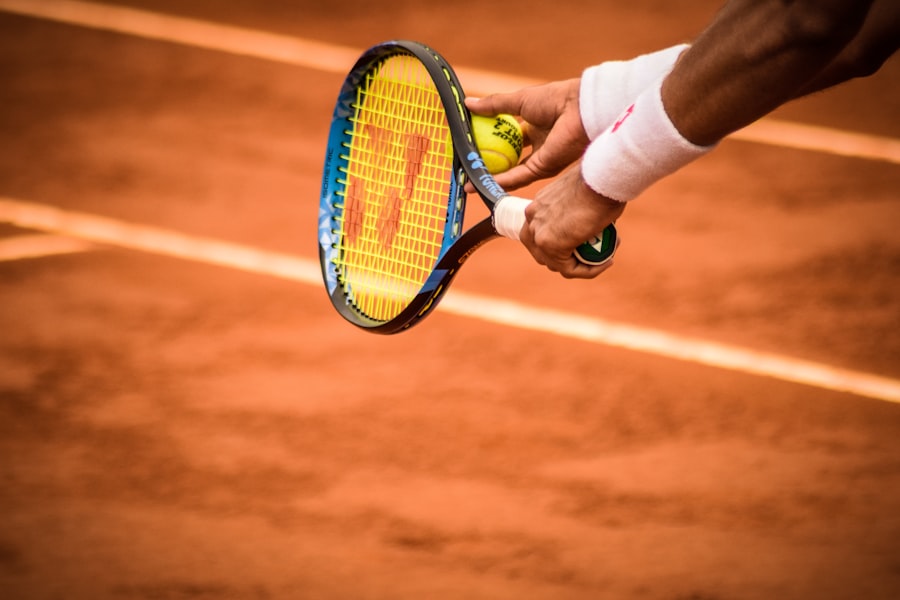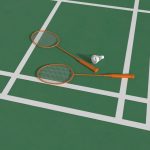Download links
How to install Mastering the Art of Basketball: Tips for Success APK?
1. Tap the downloaded Mastering the Art of Basketball: Tips for Success APK file.
2. Touch install.
3. Follow the steps on the screen.
Description
Shooting is often regarded as the most critical skill in basketball, as it directly influences a team’s ability to score points. The mechanics of shooting involve a combination of body positioning, hand placement, and follow-through. A proper shooting stance begins with the feet shoulder-width apart, providing a stable base.
The knees should be slightly bent, allowing for a natural upward motion. The shooting hand cradles the ball while the guide hand stabilizes it, ensuring that the shooter maintains control throughout the motion. The release is crucial; a smooth follow-through with the wrist relaxed and fingers pointing toward the basket can significantly enhance accuracy.
Moreover, understanding the arc of the shot is essential for maximizing scoring potential. A higher arc can increase the chances of the ball going through the hoop, as it allows for a larger target area. Players often practice shooting from various distances and angles to develop muscle memory and consistency.
Techniques such as the “BEEF” method—Balance, Eyes, Elbow, Follow-through—serve as a mnemonic device to help players remember the key components of an effective shot. Additionally, incorporating drills that focus on shooting under pressure, such as timed shooting or shooting after a sprint, can simulate game conditions and improve performance during critical moments.
Key Takeaways
- Proper footwork and body positioning are essential for shooting accuracy
- Focus on keeping the ball low and close to the body while dribbling to maintain control
- Anticipate the opponent’s moves and maintain a low defensive stance for better positioning
- Regular cardio and strength training are crucial for maintaining endurance on the court
- Effective communication and understanding of each other’s playing style is key for successful teamwork
Dribbling and Ball Handling Skills
Dribbling is not merely about bouncing the ball; it is an intricate skill that requires coordination, control, and creativity. Effective dribbling allows players to navigate through defenses, create scoring opportunities, and maintain possession. A fundamental aspect of dribbling is using both hands proficiently.
Players should practice dribbling with their non-dominant hand to become more versatile on the court. This dual-handed approach enables players to execute crossovers, behind-the-back moves, and spin dribbles with greater ease, making them less predictable to defenders. In addition to basic dribbling techniques, advanced ball-handling skills can elevate a player’s game significantly.
Moves such as hesitation dribbles or in-and-out dribbles can create space between the player and their defender. Incorporating drills that focus on change of pace and direction can enhance a player’s ability to read defenses and exploit gaps. For instance, practicing cone drills can help players develop agility and quickness while maintaining control of the ball.
Furthermore, understanding when to use specific dribbling techniques in game situations is vital; players must learn to assess their surroundings quickly and make split-second decisions that can lead to successful plays.
Defensive Strategies and Positioning

Defense is often described as the backbone of a successful basketball team. Effective defensive strategies hinge on proper positioning, anticipation, and communication among teammates. A fundamental principle of defense is maintaining a low center of gravity; players should adopt a defensive stance with knees bent and feet shoulder-width apart.
This posture allows for quick lateral movements and better reaction times when facing an offensive player. Additionally, understanding how to position oneself relative to the ball handler is crucial; defenders should aim to stay between their opponent and the basket while also being aware of potential passing lanes. Zone defense and man-to-man defense are two primary strategies employed by teams.
In man-to-man defense, each player is responsible for guarding a specific opponent, requiring constant awareness and communication. Conversely, zone defense involves players covering designated areas on the court rather than specific opponents. This strategy can be particularly effective against teams that rely heavily on outside shooting or have dominant post players.
Regardless of the defensive strategy employed, players must be adept at switching assignments and providing help defense when necessary. This requires not only individual skill but also a cohesive team effort to ensure that all defensive responsibilities are met.
Physical Conditioning and Endurance
| Metrics | Results |
|---|---|
| Cardiovascular Endurance | 8 minutes running |
| Muscular Strength | 50 push-ups |
| Flexibility | Touching toes with straight legs |
| Body Composition | 15% body fat |
Physical conditioning is an integral component of basketball performance, as it directly impacts a player’s ability to execute skills effectively throughout the game. Basketball is a high-intensity sport that demands bursts of speed, agility, and strength over extended periods. Therefore, developing cardiovascular endurance is essential for maintaining peak performance during games.
Players often engage in various conditioning drills such as interval sprints or shuttle runs to build stamina and improve their ability to recover quickly between plays. Strength training also plays a vital role in enhancing overall performance on the court. Exercises that focus on core strength, leg power, and upper body strength can significantly improve a player’s ability to shoot, rebound, and defend effectively.
For instance, squats and lunges can enhance leg strength, while push-ups and pull-ups can build upper body strength necessary for battling in the post or finishing at the rim. Additionally, flexibility training through stretching or yoga can prevent injuries and improve overall mobility, allowing players to move more freely during games.
Teamwork and Communication on the Court
Basketball is inherently a team sport that relies heavily on effective communication and collaboration among players. Successful teams often exhibit strong chemistry, which allows them to anticipate each other’s movements and make quick decisions during gameplay. Verbal communication is essential; players should call out screens, switches, or defensive assignments to ensure everyone is on the same page.
Non-verbal cues also play a significant role; eye contact or hand signals can convey intentions without disrupting the flow of play. Moreover, teamwork extends beyond mere communication; it involves understanding each player’s strengths and weaknesses. Coaches often emphasize the importance of playing to each other’s strengths—whether it’s utilizing a sharpshooter’s ability to hit three-pointers or leveraging a strong rebounder’s presence in the paint.
For example, running set plays during practice helps players learn how to move without the ball and create opportunities for one another, ultimately leading to more cohesive gameplay during competitive situations.
Mental Toughness and Focus during Games

Mental toughness is an often-overlooked aspect of basketball that can significantly influence a player’s performance under pressure. The ability to remain focused amidst distractions—whether from opposing fans or high-stakes situations—can be the difference between winning and losing. Players must cultivate resilience to bounce back from mistakes or setbacks during games.
Techniques such as visualization can help athletes prepare mentally for various scenarios they may encounter on the court. By imagining themselves successfully executing plays or overcoming challenges, players can build confidence in their abilities. Additionally, maintaining focus during games requires discipline and self-awareness.
Players should develop routines that help them stay centered before free throws or critical moments in the game. Breathing exercises or positive self-talk can serve as effective tools for managing anxiety and maintaining composure under pressure. Coaches often encourage players to set specific goals for each game—whether it’s achieving a certain number of assists or limiting turnovers—to keep their minds engaged and focused on performance rather than external factors.
Ultimately, mental toughness complements physical skills; together they form a well-rounded athlete capable of thriving in competitive environments.
If you’re a fan of basketball, you may also enjoy reading about the popular mobile game Garena Free Fire 2. This action-packed game involves intense battles and strategic gameplay, similar to the fast-paced nature of basketball. Check out this article here to learn more about this exciting game and how it can provide a thrilling experience for gamers.
FAQs
What is basketball?
Basketball is a team sport in which two teams, typically consisting of five players each, compete to score points by shooting a ball through the opposing team’s hoop.
What are the basic rules of basketball?
The basic rules of basketball include dribbling the ball while moving, passing to teammates, and shooting the ball into the opposing team’s hoop to score points. Players must also defend their own hoop and try to prevent the opposing team from scoring.
What equipment is used in basketball?
The main equipment used in basketball includes a ball, hoop, and court. Players also wear specialized basketball shoes and may use protective gear such as knee pads and ankle braces.
How is basketball played?
Basketball is played on a rectangular court with a hoop at each end. The game is divided into quarters, and the team with the most points at the end of the game wins. Players move the ball by dribbling, passing, and shooting, while also playing defense to prevent the opposing team from scoring.
What are the health benefits of playing basketball?
Playing basketball can provide numerous health benefits, including improved cardiovascular fitness, increased coordination and balance, and enhanced muscle strength and endurance. It also promotes teamwork and social interaction.
What are the different positions in basketball?
Common positions in basketball include point guard, shooting guard, small forward, power forward, and center. Each position has specific roles and responsibilities on the court, such as ball-handling, scoring, rebounding, and defending.





